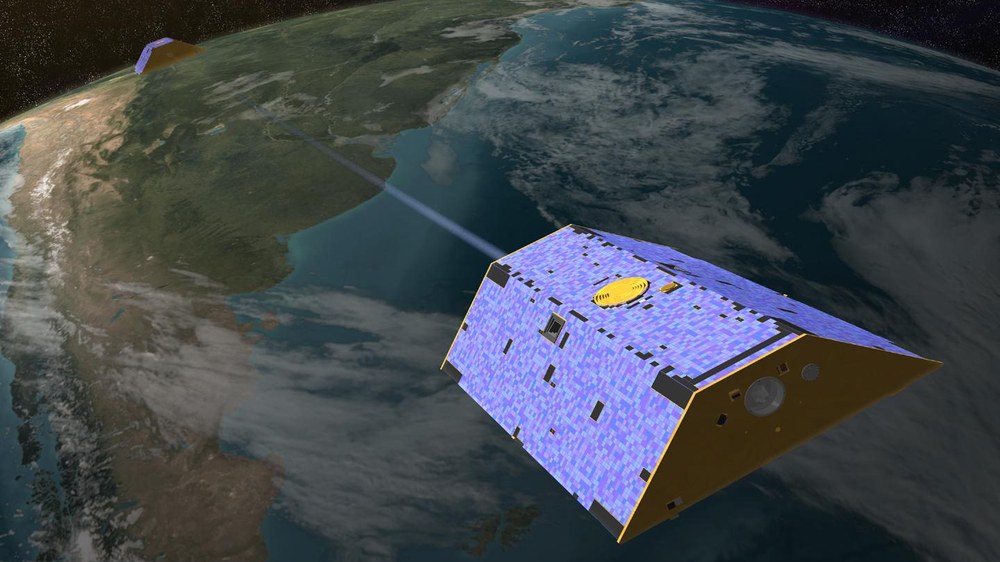GRACE
Launch: 17 March 2002, 10.21 a.m. CET
The US-German mini-satellite mission GRACE helps scientists to derive a new model of the Earth’s gravitational field with unprecedented accuracy. The following questions are addressed: Are the polar ice-caps melting? Are sea levels rising? Are we likely to face major flooding? Why do warm ocean currents like the gulf stream extend so far up into the Earth’s northern hemisphere, and what role does the influence of gravitation play in that context?
GRACE is a joint project of the US space agency, NASA, and the German Aerospace Centre (DLR). The DLR Space Operations Centre is responsible for mission management and satellite operation. The GRACE "twin satellites" were built by Astrium in Friedrichshafen. They were launched into orbit by the Russo-German company Eurockot on a Russian launch vehicle. The University of Texas (UTCSR) and the GeoReseach Centre Potsdam (GFZ) are in charge of scientific data evaluation.
Mission parameters
Launch | 17 March 2002, 10.21 a.m. CET |
Site | Plesetsk Cosmodrome, Russia |
Launcher | Rockot, Breeze-KM |
Orbital height | 500 km, 95 minutes per orbit |
Satellite mass | 2 x 500 kg |
Links
Downloads
- GRACE brochure (8.1 MB)

